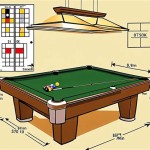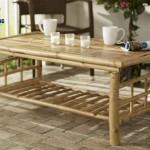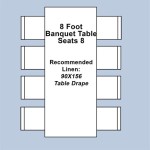The Enduring Appeal of the Oak Dining Room Table
The oak dining room table stands as a timeless centerpiece in homes across the globe. Revered for its durability, aesthetic versatility, and natural beauty, oak has long been a preferred material for furniture construction. This article explores the various aspects of the oak dining room table, examining its inherent qualities, diverse styles, maintenance requirements, and its place within the broader context of home décor.
The Strength and Durability of Oak
Oak, a hardwood sourced from oak trees (genus *Quercus*), possesses a natural density and robust cellular structure that contribute significantly to its strength and resilience. This inherent durability translates to a dining room table that can withstand the rigors of daily use. It resists dents, scratches, and warping more effectively than softer woods, making it an ideal investment for families and individuals who prioritize longevity. The robust nature of oak ensures that the table can endure heavy use, supporting large meals, hosting game nights, or serving as a general workstation without compromising its structural integrity.
The slow growth rate of oak trees contributes to the tight grain pattern that is characteristic of oak wood. This close grain significantly enhances the wood's resistance to moisture absorption, making it less susceptible to swelling or shrinking with changes in humidity. This stability is crucial for a dining room table, as it is often exposed to varying levels of moisture from spilled drinks, humid air, and cleaning solutions. Properly sealed and finished oak dining tables can maintain their shape and appearance for decades, even in challenging environmental conditions.
Beyond its inherent strength, oak can also withstand various finishing processes that further enhance its durability. Stains, varnishes, and sealants penetrate the wood's surface, providing an additional layer of protection against stains, scratches, and moisture damage. These finishes not only protect the wood but also allow for customization of the table's appearance, enabling homeowners to match the table to their existing décor. The application of high-quality finishes ensures that the oak dining room table remains a beautiful and functional piece of furniture for years to come.
Diverse Styles and Designs
Oak dining room tables are available in a wide array of styles, catering to diverse aesthetic preferences and interior design schemes. From traditional to contemporary, rustic to modern, the versatility of oak allows it to seamlessly integrate into various settings. The design possibilities are virtually limitless, ranging from simple, unadorned tables to intricately carved and detailed masterpieces.
Traditional oak dining room tables often feature classic design elements such as turned legs, detailed aprons, and rich, dark finishes. These tables evoke a sense of formality and elegance, making them suitable for traditional dining rooms and formal entertaining spaces. The use of traditional joinery techniques, such as mortise and tenon joints, further enhances the table's durability and adds to its authentic character.
Rustic oak dining room tables, on the other hand, embrace the natural imperfections and character of the wood. Knots, grain variations, and even minor cracks are often left visible, adding to the table's unique charm and creating a warm, inviting atmosphere. These tables often feature simpler designs with straight lines and sturdy legs, emphasizing the natural beauty of the oak. Rustic oak tables are well-suited for country-style homes, cabins, or any space where a relaxed, informal atmosphere is desired.
Modern oak dining room tables showcase clean lines, minimalist designs, and lighter finishes. These tables often incorporate elements such as metal accents, glass tops, or geometric shapes, creating a contemporary and sophisticated look. The use of lighter finishes, such as natural oak or whitewash, allows the wood's grain to shine through while maintaining a modern aesthetic. Modern oak tables are ideal for contemporary homes, apartments, or any space where a clean and uncluttered look is desired.
Beyond these broad categories, oak dining room tables are also available in a range of shapes and sizes. Rectangular tables are the most common, offering ample seating for large gatherings. Round tables promote conversation and intimacy, making them ideal for smaller dining spaces. Oval tables provide a balance between rectangular and round shapes, offering both ample seating and a sense of intimacy. The size of the table should be carefully considered to ensure it fits comfortably in the dining room and accommodates the typical number of diners.
Maintenance and Care
While oak is a durable material, proper maintenance and care are essential to preserve the beauty and longevity of an oak dining room table. Regular cleaning, protection from spills, and occasional refinishing can help keep the table looking its best for years to come.
Regular cleaning should involve wiping the table down with a soft, damp cloth after each use. This removes food particles, dust, and other debris that can accumulate on the surface. For occasional deep cleaning, a mild soap solution can be used. However, it is important to avoid using harsh chemicals or abrasive cleaners, as these can damage the finish and the wood itself.
Protecting the table from spills is crucial to prevent staining and water damage. Spills should be cleaned up immediately with a clean, absorbent cloth. Using coasters and placemats can also help protect the table from heat marks and scratches. It is also advisable to avoid placing hot dishes directly on the table surface, as this can damage the finish.
The application of furniture polish can help maintain the luster and shine of the table's finish. However, it is important to choose a polish that is specifically designed for wood furniture and to follow the manufacturer's instructions carefully. Avoid using polishes that contain silicone, as these can create a build-up on the surface and make it difficult to refinish the table in the future.
Depending on the level of use and the quality of the finish, an oak dining room table may require refinishing after a number of years. Refinishing involves removing the old finish, sanding the wood, and applying a new finish. This process can restore the table to its original beauty and protect it from further damage. While refinishing can be a DIY project, it is often best to hire a professional to ensure a high-quality result.
Furthermore, environmental factors such as humidity and direct sunlight can affect the condition of an oak dining room table. Maintaining a consistent humidity level in the home can help prevent the wood from drying out and cracking. Avoiding direct sunlight exposure can prevent the finish from fading or yellowing over time. Using curtains or blinds to block direct sunlight can help protect the table.
In conclusion, the oak dining room table represents a functional and aesthetic cornerstone of the modern home. Its enduring value is rooted in its superior strength, stylistic adaptability, and manageable maintenance requirements.

Oak Furniture Dining Tables Countryside Amish

Seno Oak Dining Table For 6 Apartment Room Farmhouse

Camden Rustic Oak Dining Table 4 6 Seater Room Bentley Designs Ltd

Soho Oak Large Dining Table With 6 Chairs Set The Furniture Market

Earthy Oak Resin Table Top Timber

Parsons Dining Table White Oak

Live Edge Oak Dining Table Wood Room Wooden Tables

Reclaimed Oak Dining Table Peppermill Interiors

Intercon Furniture Classic Oak Dining Room Collection By Rooms

Yates Dark Oak Dining Room Set








